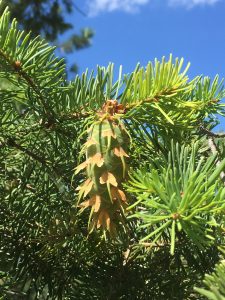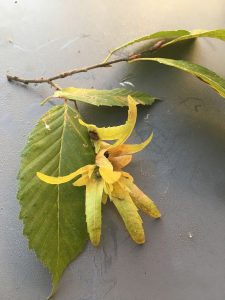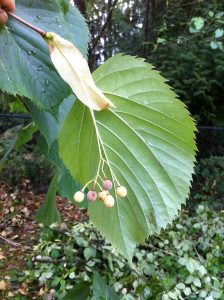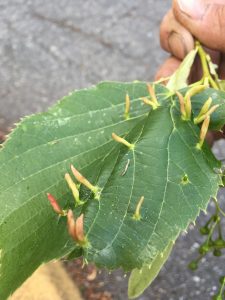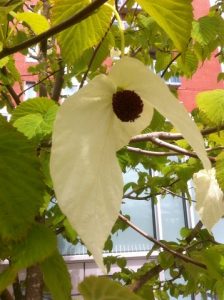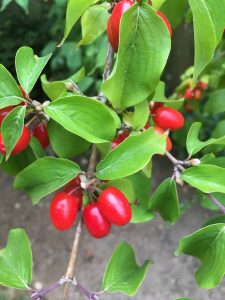There are many beautiful trees in our West Coast landscapes and some are really easy to identify. I thought it might be fun to compile a list of landscape trees that you can easily identify. Perhaps it will inspire you to learn more about them and go on to learn about harder to identify trees.
Douglas fir (Pseudotsuga menziesii)
This is our West Coast native and it’s easy to identify because its large bracts protrude from its cones. When you see these bracts you know it’s a Doug.
Bonus: read my blog post about a 1,000-year-old Douglas fir discovered on Vancouver Island. Read the book. It’s excellent! Let’s protect the last remaining stands of old growth in BC.
Hornbeam (Carpinus betulus)
The specific epithet “betulus” is a hint; the leaves look birch-like. What makes this tree awesome is the seed partially covered by bracts. You can’t miss Carpinus betulus when you see the bracts. These trees look great on boulevards.
Littleleaf linden (Tilia cordata)
Can you guess what the specific epithet “cordata” means? It means heart-shaped leaves. And again we get an awesome bract with several drupes protruding from it. When you see this set-up, heart-shaped leaf, bract and drupes, it’s Tilia cordata.
I recently observed mites on the leaves of Tilia cordata. You can prune off the affected branches but overall the tree should be fine. It’s just a freaky look.
Ghost tree (Davidia involucrata)
I shot this picture at a daycare looking up into the tree the way the kids do. I wonder if they’re afraid of the ghosts in the trees? I think the landscape architect had some fun with the design of this daycare.
The specific epithet “involucrata” hints at involucre, a grouping of bracts that partially covers a seed. This is easily in the top 5 of my most loved trees. I still can’t believe this tree exists. I love it.
If you see a smaller tree full of ghosts, you know it’s Davidia involucrata. You get bonus points if you remember what involucre refers to.
Cornelian cherry (Cornus mas)
Cornus is the dogwood family. Cornus mas provides multi-season interest with flowers and then edible cherries. I’ve seen people collecting the cherries in public parks and rushing off to make jam at home. I’ve never tried it.
When the cherries start dropping some people start panicking, asking for pruning and tree replacements like lunatics. This plant can a shrub or a small tree. When you see a shrubby tree with red cherries you know it’s Cornus mas.
There you are, five easy to identify landscape trees for you to enjoy. Practice their names and see if you can identify them in your local landscapes.


